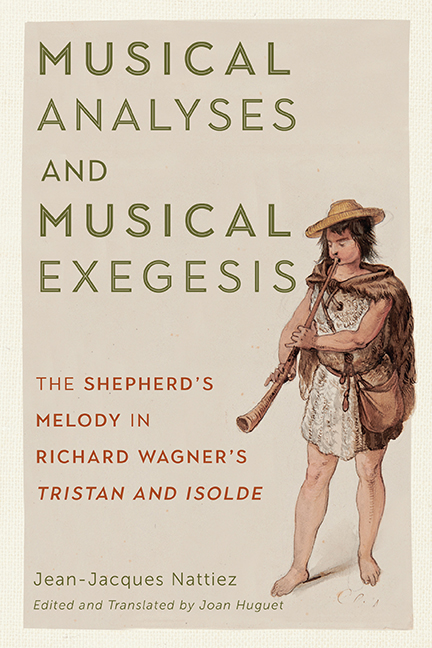 Musical Analyses and Musical Exegesis
Musical Analyses and Musical Exegesis Book contents
- Frontmatter
- Dedication
- Contents
- Foreword to the French Edition
- Preface
- Introduction: The English-Horn Solo, My Approach, and Models of Analysis and Musical Meaning
- Part I Immanent Analysis of the English-Horn Solo’s Musical Structures
- Part II Esthesic Analysis
- Part III Poietic Analysis
- Part IV Hermeneutics
- Conclusion: The Validity of Structural Analyses and Interpretations
- Bibliography
- Index
Introduction: The English-Horn Solo, My Approach, and Models of Analysis and Musical Meaning
Published online by Cambridge University Press: 02 June 2021
- Frontmatter
- Dedication
- Contents
- Foreword to the French Edition
- Preface
- Introduction: The English-Horn Solo, My Approach, and Models of Analysis and Musical Meaning
- Part I Immanent Analysis of the English-Horn Solo’s Musical Structures
- Part II Esthesic Analysis
- Part III Poietic Analysis
- Part IV Hermeneutics
- Conclusion: The Validity of Structural Analyses and Interpretations
- Bibliography
- Index
Summary
The English-Horn Solo and its Challenges
My goal for this study is to examine contemporary musicology's various methodologies for attempting to understand the nature of musical structures and their attached meanings. To do so, I will study the compositional pathways that created the musical substance of the work, the perceptual pathways that release the work's meanings, and the historical and cultural contexts that gave rise to the work. The approaches that I discuss here primarily focus on the “learned” or “classical” works of the western tradition, often seen as the privileged repertoire for demonstrating theoretical topics. However, many of them can also explain the diverse music of the twentieth and twenty-first centuries, as well as music of oral traditions and popular music, albeit with modifications. My hope is that analysts will be able to apply the methodology that I propose here to any genre of music as desired. I would like to emphasize from the outset that a not-insignificant portion of my analysis appeals to the questions typically raised by ethnomusicological studies. As a result, I situate myself in a perspective that I have always defended: that of musicology in the broadest sense of the term.
To compare the different methodologies for untangling the inner workings of a musical work, we must apply each of them to a seemingly simple example. I will thus discuss the English-horn solo in act III of Richard Wagner's Tristan und Isolde. I believe that this excerpt is one of the finest monophonic works in western music, along with Johann Sebastien Bach's Cello Suites (BWV 1007–1012), Claude Debussy's Syrinx, and Edgar Varèse's Density 21.5. The solo occurs at the beginning of act III, following fifty-one measures of orchestral introduction after the curtain rises. It is meant to be played by a shepherd on a Schalmei. Due to its role in the opera's plot, Wagner directed that the performer should play the solo onstage but outside of the audience's line of vision, as opposed to in the orchestra pit.
Many factors justify treating the solo as an autonomous piece, as is frequently noted in the musicological literature. Played by a solo instrument immediately following the act's Prelude, it is “musically distinct” and “properly described as music for the stage,” according to Jacques Chailley.
- Type
- Chapter
- Information
- Musical Analyses and Musical ExegesisThe Shepherd's Melody in Richard Wagner's <I>Tristan and Isolde</I>, pp. 1 - 28Publisher: Boydell & BrewerPrint publication year: 2021


